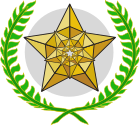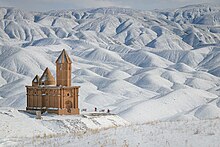User talk:Prabhachatterji
|
Our first steps tour and our frequently asked questions will help you a lot after registration. They explain how to customize the interface (for example the language), how to upload files and our basic licensing policy (Wikimedia Commons only accepts free content). You don't need technical skills in order to contribute here. Be bold when contributing and assume good faith when interacting with others. This is a wiki. More information is available at the community portal. You may ask questions at the help desk, village pump or on IRC channel #wikimedia-commons (webchat). You can also contact an administrator on their talk page. If you have a specific copyright question, ask at the copyright village pump. |
|
-- 06:06, 11 December 2011 (UTC)
This message was added automatically by Nikbot, if you need some help about it please read the text above again and follow the links in it, if you still need help ask at the ![]() → Commons:Help desk in any language you like to use. --Nikbot 12:55, 5 February 2013 (UTC)
→ Commons:Help desk in any language you like to use. --Nikbot 12:55, 5 February 2013 (UTC)
Copyright status: File:Ishikawa Diagram .png
[edit]| This media may be deleted. |
Thanks for uploading File:Ishikawa Diagram .png. I notice that the file page either doesn't contain enough information about the license or it contains contradictory information about the license, so the copyright status is unclear.
If you created this file yourself, then you must provide a valid copyright tag. For example, you can tag it with {{self|GFDL|cc-by-sa-all}} to release it under the multi-license GFDL plus Creative Commons Attribution-ShareAlike All-version license or you can tag it with {{PD-self}} to release it into the public domain. (See Commons:Copyright tags for the full list of license tags that you can use.) If you did not create the file yourself or if it is a derivative of another work that is possibly subject to copyright protection, then you must specify where you found it (e.g. usually a link to the web page where you got it), you must provide proof that it has a license that is acceptable for Commons (e.g. usually a link to the terms of use for content from that page), and you must add an appropriate license tag. If you did not create the file yourself and the specific source and license information is not available on the web, you must obtain permission through the VRT system and follow the procedure described there. Note that any unsourced or improperly licensed files will be deleted one week after they have been marked as lacking proper information, as described in criteria for deletion. If you have uploaded other files, please confirm that you have provided the proper information for those files, too. If you have any questions about licenses please ask at Commons:Village pump/Copyright or see our help pages. Thank you. |
JuTa 20:20, 17 August 2013 (UTC)
Scalable Vector Graphics (SVG)
[edit]In other languages (translate this)
|
|---|
|
|

|
 Thank you for uploading some images!
Did you know that Wikimedia Commons recommends the SVG (Scalable Vector Graphics) format for certain types of images? Scalable Vector Graphics are designed to look appropriate at any scale, and SVG images are easier to modify and translate, helping Wikimedia to distribute knowledge to all of the world. A lot of modern programs support SVG export. If you encountered problems or have questions, don't hesitate to ask me, a member of the Graphic Lab, or the Graphics village pump. Uploading images in SVG format isn't mandatory, but it would help. (To avoid any misunderstandings, please don't just put raster images into an SVG container as embedded raster.) Thanks, and happy editing!
|
EugeneZelenko (talk) 14:27, 27 September 2014 (UTC)
Source of derivative work is not properly indicated: File:Ho Chi Minh Memorials complex.jpg
[edit]| This file may be deleted. |
A file that you have uploaded to Wikimedia Commons, File:Ho Chi Minh Memorials complex.jpg, is a derivative work, containing an "image within an image". Examples of such works would include a photograph of a sculpture, a scan of a magazine cover, or a map that has been altered from the original. In each of these cases, the rights of the creator of the original must be considered, as well as those of the creator of the derivative work.
While the description page states who made this derivative work, it currently doesn't specify who created the original work, so the overall copyright status is unclear. If you did not create the original work depicted in this image, you will need to specify the owner of the copyright. Please edit the file description and add the missing information, or the file may be deleted. If you created the original content yourself, enter this information as the source. If someone else created the content, the source should be the address to the web page where you found it, the name and ISBN of the book you scanned it from, or similar. You should also name the author, provide verifiable information to show that the content is in the public domain or has been published under a free license by its author, and add an appropriate template identifying the public domain or licensing status, if you have not already done so. Please add the required information for this and other files you have uploaded before adding more files. If you need assistance, please ask at the help desk. Thank you! |
Ronhjones (Talk) 22:29, 20 July 2018 (UTC)
Round 2 of Picture of the Year 2018 is open!
[edit]
Dear Prabhachatterji,
You are receiving this message because we noticed that you voted in R1 of the 2018 Picture of the Year contest, but not yet in the second round. Wikimedia users are invited to vote for their favorite images featured on Commons during the last year (2018) to produce a single Picture of the Year.
Hundreds of images that have been rated Featured Pictures by the international Wikimedia Commons community in the past year were entered in this competition. These images include professional animal and plant shots, breathtaking panoramas and skylines, restorations of historical images, photographs portraying the world's best architecture, impressive human portraits, and so much more.
There are two total rounds of voting. In the first round, you voted for as many images as you liked.
In the final (and current) round, you may vote for a maximum of three images. The image with the most votes will become the Picture of the Year 2018.
Round 2 will end 17 March 2019, 23:59:59.
Thanks,
the Wikimedia Commons Picture of the Year committee 18:04, 16 March 2019 (UTC)
And also:
4nn1l2 (talk) 12:08, 21 June 2019 (UTC)
Round 1 of Picture of the Year 2022 voting is open!
[edit]
Read this message in your language
Dear Wikimedian,
Wikimedia Commons is happy to announce that the 2022 Picture of the Year competition is now open. This year will be the seventeenth edition of the annual Wikimedia Commons photo competition, which recognizes exceptional contributions by users on Wikimedia Commons. Wikimedia users are invited to vote for their favorite images featured on Commons during the last year (2022) to produce a single Picture of the Year.
Hundreds of images that have been rated Featured Pictures by the international Wikimedia Commons community in the past year are all entered in this competition. These images include professional animal and plant shots, breathtaking panoramas and skylines, restorations of historical images, photographs portraying the world's best architecture, impressive human portraits, and so much more.
For your convenience, we have sorted the images into topical categories. Two rounds of voting will be held: In the first round, you may vote for as many images as you like. The top 30 overall and the two most popular images in each category will continue to the final. In the final round, you may vote for just three images to become the Picture of the Year.
Round 1 will end on UTC.
Thanks,
the Wikimedia Commons Picture of the Year committee
You are receiving this message because you voted in the 2021 Picture of the Year contest.
Delivered by MediaWiki message delivery (talk) 09:15, 20 April 2023 (UTC)